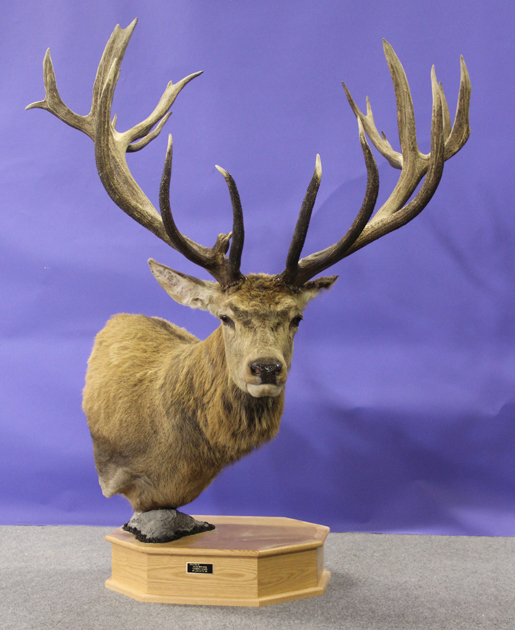When I was in Colorado a few weeks ago, I was fortunate enough to harvest a nice mule deer buck. Since this is possibly the only muley I’ll ever get, I took it to the taxidermist when I returned so that I can remember my western adventure for years to come.
When I delivered him to the taxidermist, however, I had to answer the same question that my dad asked every customer over the years. How do you want him mounted? The taxidermist must know which way the animal should be turned, whether to have a shoulder or simple neck, and whether it should be in an upright or sneak position. Unlike live animals that can move through all poses in seconds, mounted animals will stay the way they are positioned forever.
What many people are surprised to learn is that only the deer’s hide and antlers are used in the process. Because the rest will decay, the head is skinned and the antlers cut off. The meat and bones are discarded and replaced with a manikin or headform purchased or made by the taxidermist. Years ago, these were all made of building paper and paste but virtually all are now polyurethane foam.

As I helped in dad’s shop, I made thousands of these headforms over the years. A two piece fiberglass mold had to be waxed and clamped together before the two components of the foam were mixed and poured inside. A backboard was fastened in place as a chemical reaction caused the foam to expand rapidly and fill the mold. After fifteen minutes, it was cured enough to be released from the mold and the process could be repeated.
Because deer come in a variety of sizes and because some customers want right turns while others want lefts or straights, we had many molds to make all shapes and sizes. These provided the bases upon which the antlers were attached and the skin sewn in place. The eyes, nose, and ears would be modeled with clay and adjusted appropriately and then left to dry for months before they could be finished.
Having made these headforms for several summers, I was never surprised at the outcome. Each mold yielded exactly the same manikin every time. If the chemicals were mixed properly and the two halves assembled correctly, every single product from a given mold was dependably identical.
As I’ve considered this process, I’ve been reminded of Paul’s command in Romans 12:2 which says, “Do not conform any longer to the pattern of this world, but be transformed by the renewing of your mind.” Too often we conform to worldly patterns and end up looking like everyone else which is much different than Jesus desires.
J B Phillips translates the phrase this way, “Don’t let the world around you squeeze you into its own mold.” Paul warns the Roman Christians about this because there was intense pressure for them to go along with society and conform to its beliefs and norms even when they differed greatly from those of God. Peer pressure, financial pressure, legal pressure, and family pressure are nothing new. Part of the law that God gave Moses included this admonition in Exodus 23:2 “Do not follow the crowd in doing wrong.” The powerful temptation to be like everyone else is not limited to our school years. We have to resist this our entire lives.
The words “the world” in this passage can be translated “this age.” Although the exact details of each age’s mold may vary slightly, they are all much different than God’s will for us. Jesus’ mold is the one we are to conform to and His is the shape we are to take. Unlike lifeless deer heads, His is a living representation that allows us to be fully alive and functional.
As we contemplate forms and molds, let’s remember this important advice from God’s Word and not let the world press us into its mold. Instead, let’s copy Jesus!
Blessings, George